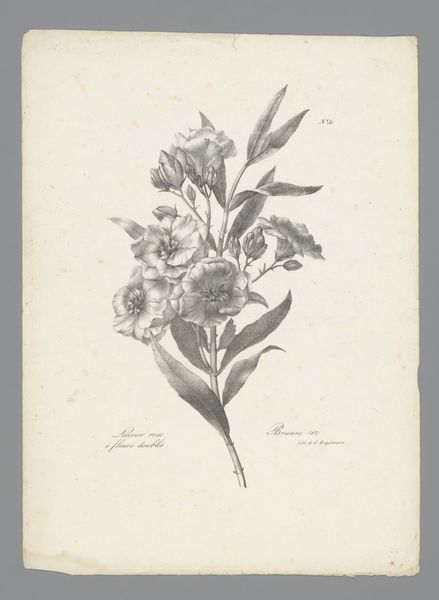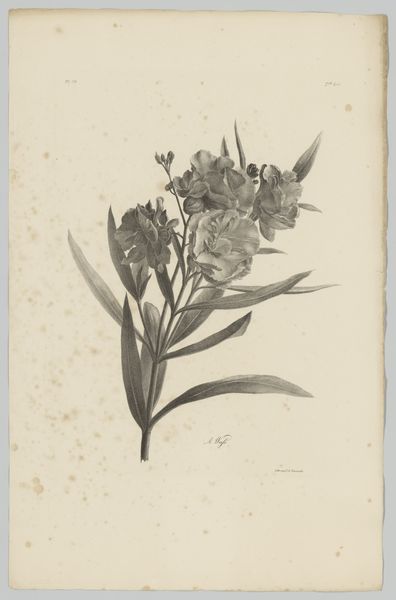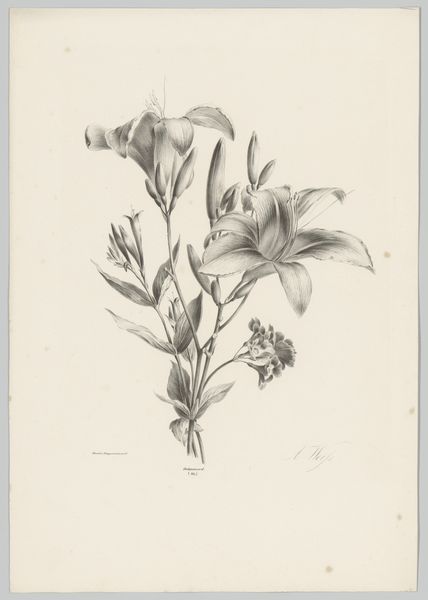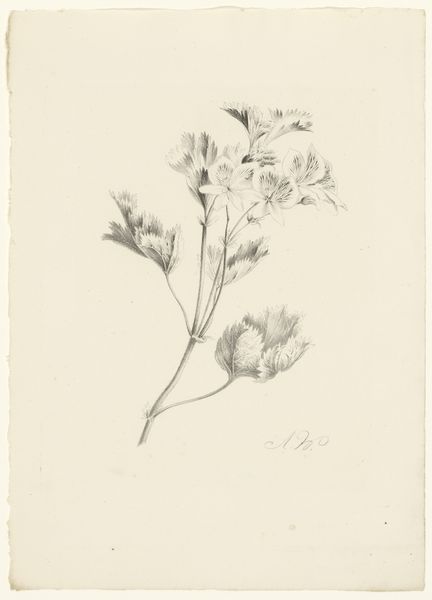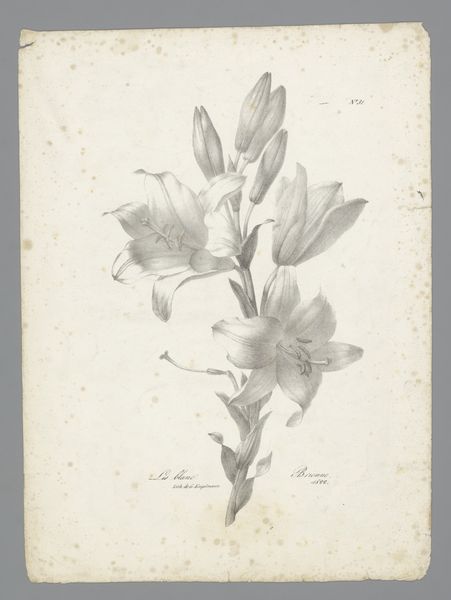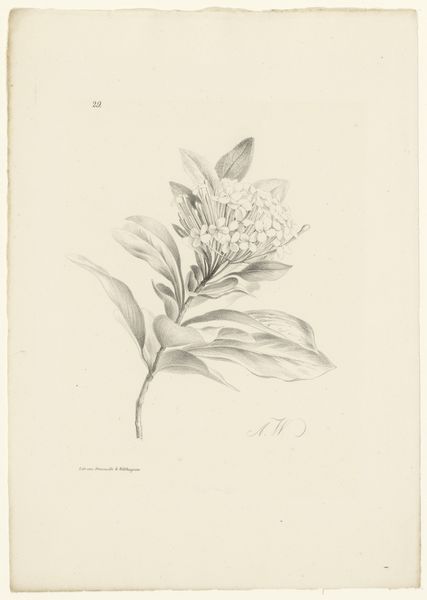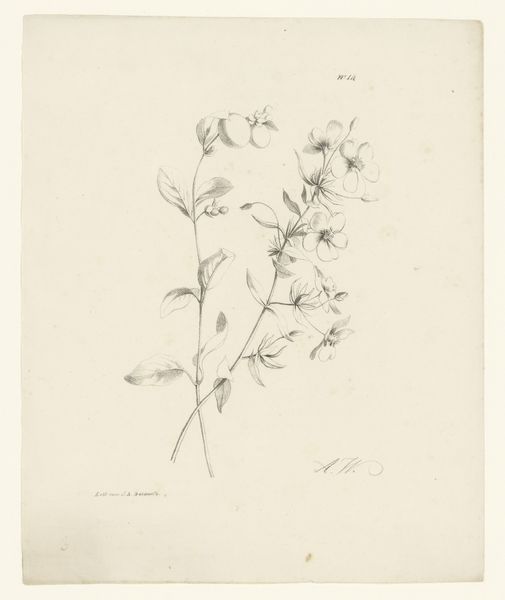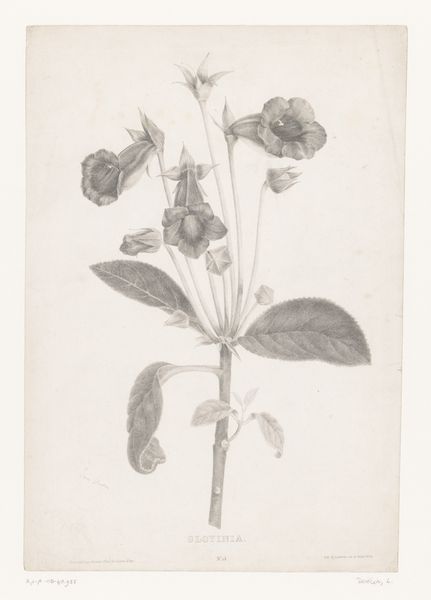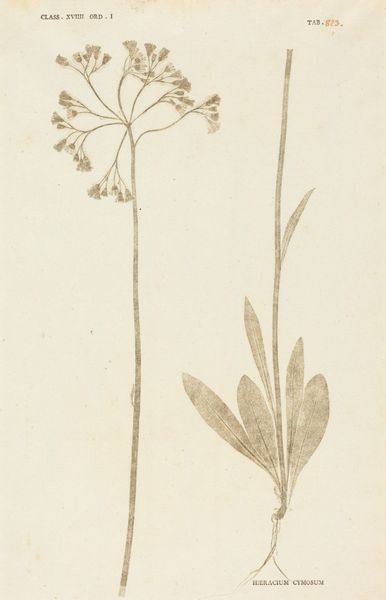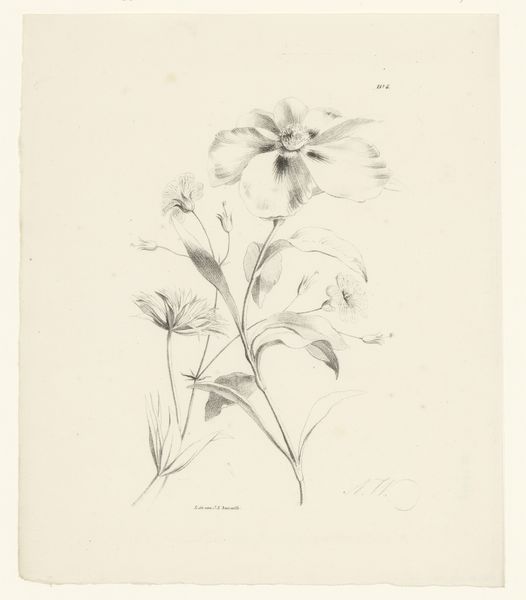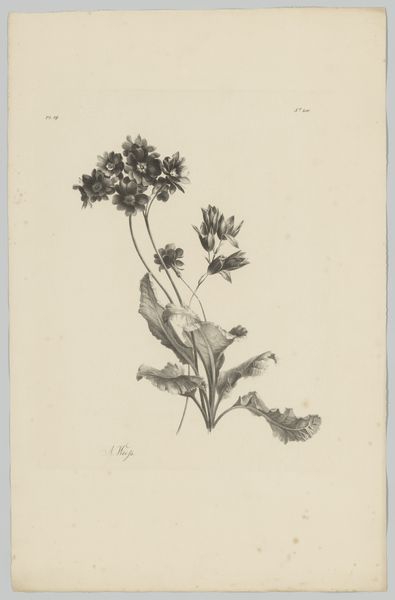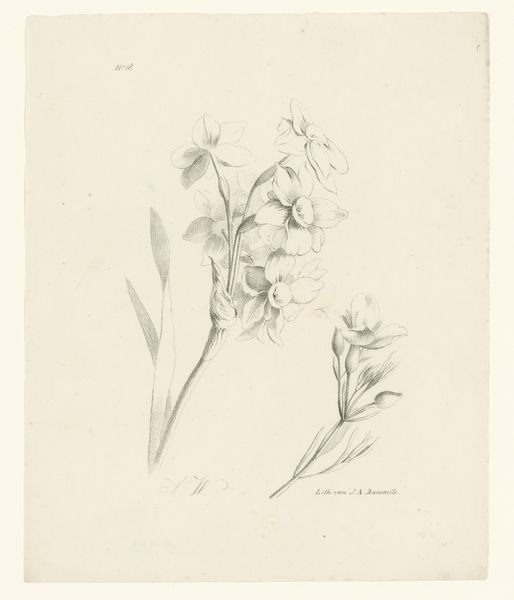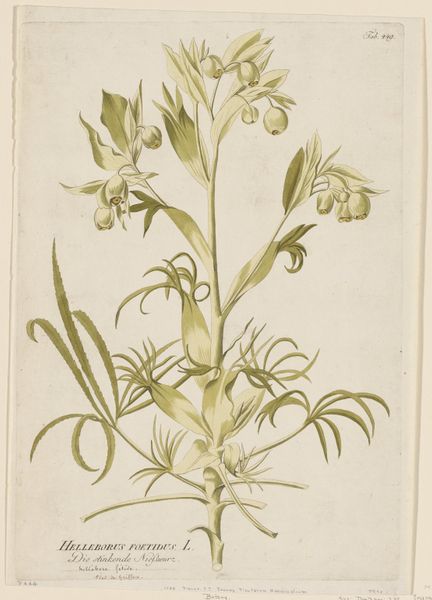
drawing, pencil
#
drawing
#
form
#
pencil
#
line
#
realism
Dimensions: height 255 mm, width 211 mm
Copyright: Rijks Museum: Open Domain
Editor: Here we have “Diverse Bloemen,” or “Various Flowers,” a pencil drawing from sometime between 1820 and 1833, located in the Rijksmuseum. It's by Anton Weiss. The delicate rendering of the flower, especially the leaves, strikes me, it's as if they're reaching. What do you see when you look at this work? Curator: I see a carefully constructed presentation of natural form, yes, but one must always remember these drawings were not made in a vacuum. Realism as an aesthetic choice coincided with—and often reinforced—specific social power structures and class-based approaches to understanding the natural world. Who had the leisure and education to produce and consume such images? Who was excluded? Editor: That’s an interesting perspective. I was focused on the… well, on the flower itself. How the artist captured light. Curator: And that focus is, itself, a product of our own conditioning! Consider, for instance, the tradition of botanical illustration. It was ostensibly scientific, aimed at objective representation, but was also deeply implicated in colonialism. Drawings like this one, you see, played a crucial role in cataloging and, ultimately, exploiting natural resources across the globe. Editor: So, this isn’t just a pretty drawing of a flower? Curator: No, it’s never *just* that, is it? The context always shapes our understanding, and that’s why thinking intersectionally is critical here. Look closely: Who do you think the audience for this drawing would have been in the 1820s? Editor: Probably wealthy individuals, maybe interested in science, or art collectors… Curator: Exactly. People who benefitted from existing power dynamics. So, to truly appreciate this work, we must engage with its complicated past. Editor: This really broadens my understanding, from just appreciating the art itself, to also seeing its relationship to history and power. I never considered that botanical drawings could be tied to colonialism. Thank you! Curator: My pleasure. Let’s continue looking closely, thinking deeply, and challenging accepted norms.
Comments
No comments
Be the first to comment and join the conversation on the ultimate creative platform.
